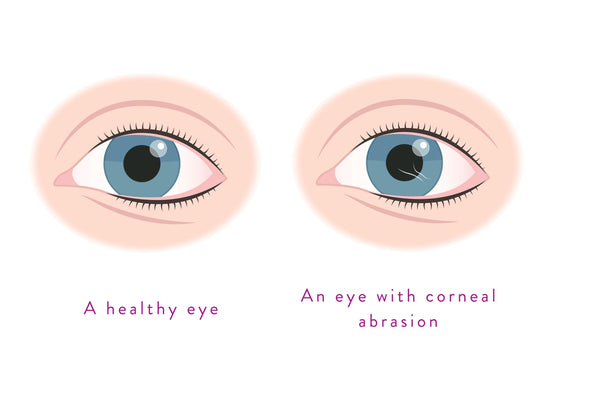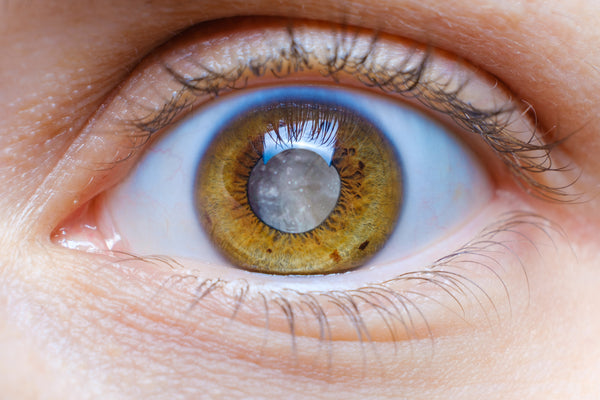
Hyperopia is a very common eye condition that can affect both children and adults. It is also known as 'far-sightedness,' in which distant objects can be clearly seen, but objects nearby may appear blurred. This condition can also cause frequent headaches, eye strain, dull eye pain, and difficulty reading.
Recognising the symptoms of hyperopia and getting it diagnosed quickly with regular eye tests is important for managing the condition. Here, we'll explain the possible causes and complications of hyperopia, as well as treatment options and how it may be prevented.
What causes hyperopia?

Hyperopia is a refractive error. This means that light rays aren't refracted properly and disrupt the light's focus on the retina, which affects your vision. It's often caused by the shape of your eye, a short eyeball or a flatter cornea. However, hyperopia can also be passed down from your parents and is usually present from birth, but since children have a very flexible eye lens that helps them to see clearly, it can go undetected until they are older.
Recognise the symptoms of hyperopia
The most common hyperopia symptoms to look out for include:
- Blurred vision, especially when looking at items that are close to you.
- Fatigue.
- Eye strain.
- Frequent headaches.
- Dull pain in your eyes.
- Difficulty reading and needing to squint your eyes to see the words on the page.
- Double vision.
- Tired eyes after looking at something closely, such as a computer screen or book.
Complications of hyperopia
The biggest complications adults will face with hyperopia are the uncomfortable symptoms mentioned above, such as headaches, pain, double vision, blurry images, difficulty reading and eye strain, making it very difficult to complete daily tasks.
Younger children who may have undiagnosed or untreated hyperopia will be more likely to develop other eye problems, including amblyopia (lazy eye) or strabismus (eyes that look in different directions). Early and regular eye exams can help identify hyperopia before leading to other complications.
Diagnosis of hyperopia
Your optometrist can diagnose hyperopia through a comprehensive but painless eye exam. Drops may be administered, if required, during the test to dilate your pupils' size, allowing more light to come through. Then, your optician will be able to see parts of your eye that are farther back to look for refractive errors. During this exam, they'll also be able to look for other conditions like glaucoma and cataracts, which can also be picked up by a routine eye examination. So, if you experience any symptoms or even just feel like your eyes are tired, it's useful to schedule a checkup with an OCT scan included to test for hyperopia and other eye conditions.
Treatment options for hyperopia

Hyperopia can be corrected with the following treatment options:
- Wearing eyeglasses: The lenses in glasses can change the way light focuses on your retina to correct hyperopia. The degree of your hyperopia will determine the type of lenses you'll need. For higher prescriptions, thinner lens designs can be used to maximise the cosmetic appearance.
- Contact lenses: Similar to eyeglasses, contact lenses will correct the way light enters your eye with the lenses suited to your specific needs. It's purely down to personal preference whether you choose contact lenses or eyeglasses.
- Surgery: There are several surgery options to help correct hyperopia. LASIK is possible for lower levels of hyperopia, however, the correction is often less successful than myopia correction due to the steepened corneal shape collapsing and flattening over time, cancelling out the corrective effect. For people with higher degrees, a refractive lens exchange can help.
Preventing hyperopia
Unfortunately, there's no way to prevent hyperopia as, in most cases, it's caused by genetics.
Certain lifestyle habits can help to keep your eyes healthy and prevent further complications, including:
- Getting regular eye exams will allow your optician to check for eye problems before you even exhibit symptoms. For young children, getting early eye exams can help to identify and prevent hyperopia developing into other, more serious eye conditions.
- Resting your eyes regularly, particularly if you look at a screen a lot for work, can help ease discomfort and reduce the risk of eye strain.
- Wearing sunglasses even on a cloudy day will help to safeguard your eyes from rays that can make their way through the clouds.
- Eating a nutritious diet and ensuring you get enough vitamin A, vitamin C, vitamin E, and lutein from lots of fruit and leafy greens are all important for maintaining healthy vision.
Find a Leightons branch near you to book your eye test.
How Leightons can help
Leightons can provide professional eye tests and expert advice for those with hyperopia and other eye conditions, such as glaucoma, to help monitor and manage your eye health, ensuring your prescription is up to date and optimise your visual acuity.
Whether you have concerns about your eyesight or you're simply due a checkup, Leightons is here to help.







